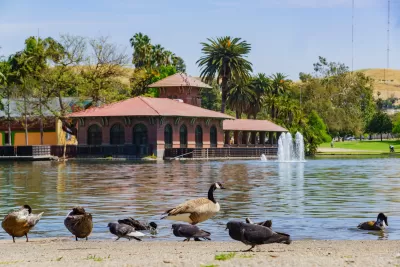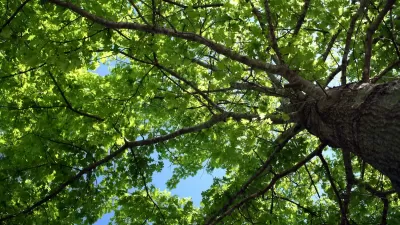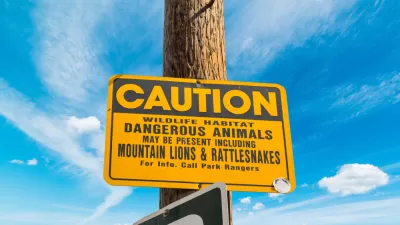A legacy of historic housing discrimination and disinvestment is having lasting effects on more than just human lives in cities.

An article by Dorany Pineda on Phys.org describes how bird population distribution in Los Angeles is shaped by historic development and discrimination patterns.
As Pineda explains, researchers from Cal State Los Angeles are studying the presence of birds in various neighborhoods to understand how density, tree canopy, and other factors impact where different species of urban birds can successfully live. The research was “a vivid illustration of the so-called luxury effect—the phenomenon by which wealthier, and typically whiter, areas attract a larger and more diverse population of birds.”
According to the researchers, “Historically redlined nonwhite communities, such as Boyle Heights, have less tree canopy and greater housing density than greenlined neighborhoods. As a result, these areas have less bird biodiversity and larger populations of synanthropic birds—species adapted to dense urban environments such as house finches and sparrows, European starlings, common pigeons and northern mockingbirds.” By contrast, ‘greenlined’ areas have more trees and thus a greater diversity of bird species.
The study is another example of the lasting impacts of redlining and other discriminatory policies that continue to affect American cities. “Other researchers have found strong links between historically redlined communities and increased risks of diabetes, hypertension and early mortality from heart disease. Redlined communities are also hotter and have more pollution and less canopy cover and green spaces than non-redlined regions, studies show.”
The study authors note that to promote urban biodiversity equitably, “cities across the U.S. and the world must work to understand their racist and segregationist histories, which is a necessary step toward creating conditions that support urban wildlife along with a more equitable experience of wildlife for a city's inhabitants.”
FULL STORY: How LA's bird population is shaped by historic redlining and racist loan practices

Alabama: Trump Terminates Settlements for Black Communities Harmed By Raw Sewage
Trump deemed the landmark civil rights agreement “illegal DEI and environmental justice policy.”

Study: Maui’s Plan to Convert Vacation Rentals to Long-Term Housing Could Cause Nearly $1 Billion Economic Loss
The plan would reduce visitor accommodation by 25% resulting in 1,900 jobs lost.

Why Should We Subsidize Public Transportation?
Many public transit agencies face financial stress due to rising costs, declining fare revenue, and declining subsidies. Transit advocates must provide a strong business case for increasing public transit funding.

Paris Bike Boom Leads to Steep Drop in Air Pollution
The French city’s air quality has improved dramatically in the past 20 years, coinciding with a growth in cycling.

Why Housing Costs More to Build in California Than in Texas
Hard costs like labor and materials combined with ‘soft’ costs such as permitting make building in the San Francisco Bay Area almost three times as costly as in Texas cities.

San Diego County Sees a Rise in Urban Coyotes
San Diego County experiences a rise in urban coyotes, as sightings become prevalent throughout its urban neighbourhoods and surrounding areas.
Urban Design for Planners 1: Software Tools
This six-course series explores essential urban design concepts using open source software and equips planners with the tools they need to participate fully in the urban design process.
Planning for Universal Design
Learn the tools for implementing Universal Design in planning regulations.
Smith Gee Studio
Alamo Area Metropolitan Planning Organization
City of Santa Clarita
Institute for Housing and Urban Development Studies (IHS)
City of Grandview
Harvard GSD Executive Education
Toledo-Lucas County Plan Commissions
Salt Lake City
NYU Wagner Graduate School of Public Service





























